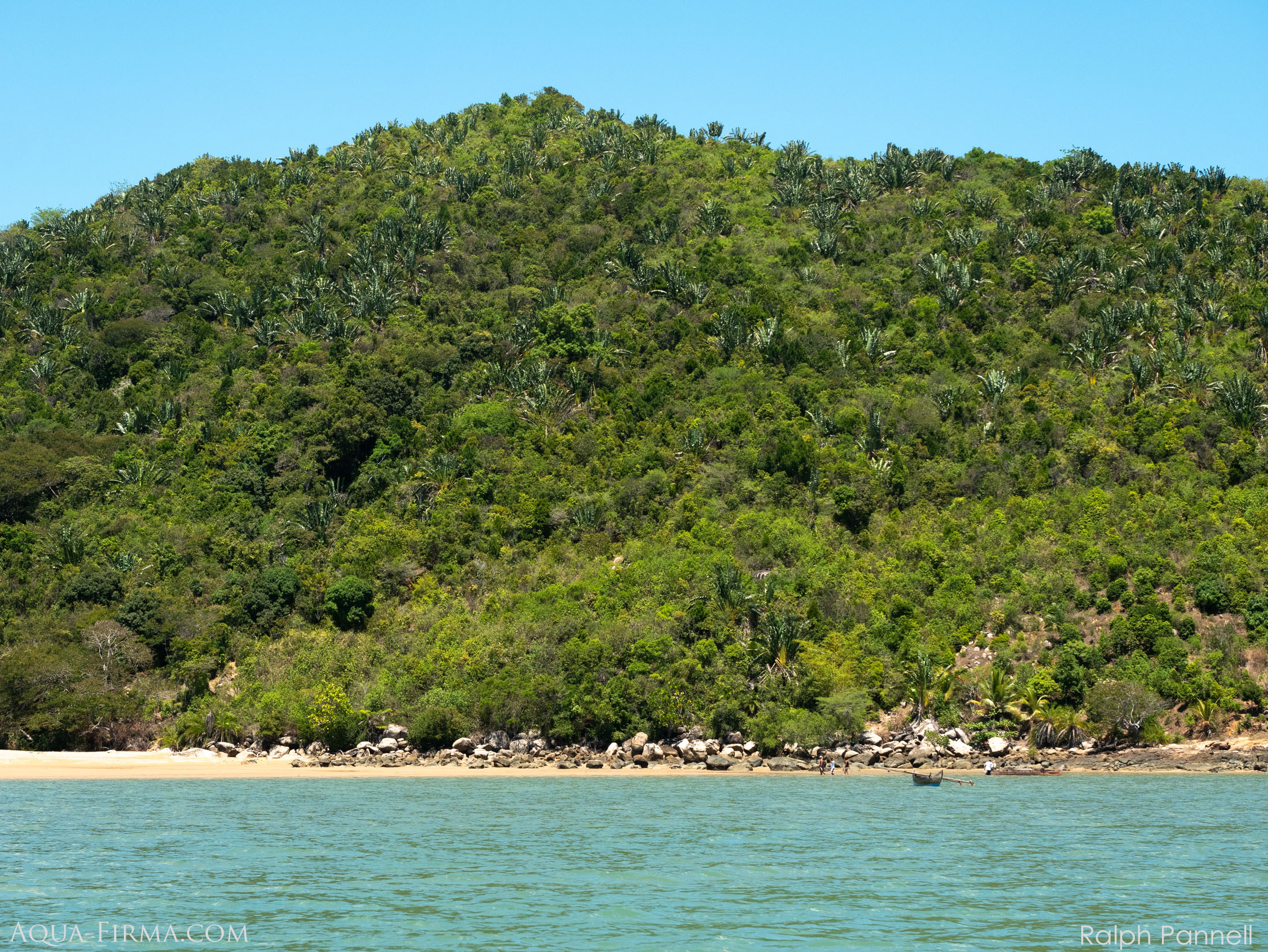Whale Shark Research – Islands, Marine Life & Lemurs
Madagascar
£2,290
with Aqua-Firma Photographer Ralph Pannell
& Madagascar's leading Whale Shark Researcher Stella Diamant
As you fly into Nosy Be, you won't just be struck by the glorious sight of turquoise waters and scattered islands, but also some heartening patches of dark green forest. On Nosy Be Island itself, this forest is the Lokobe National Park, which is a 7.4km2 preserve Madagascar's most easterly tropical rainforest.
Nosy Be has Madagascar's best infrastructure, so it is hardly surprising that most of its forest has been converted to farm land, coastal dwellings and towns, of which the interestingly named Hellville is its capital. The forests of Lokobe would have gone the same way, but were saved when in 1926, they were gazetted as a Strict Nature Reserve. Scientists and researchers were the only people granted access; until in 2011 when the area was pronounced a national park.
Nowadays we can access the park from the sea, via a small village called Ampasipohy. The local community takes great pride in the forest and we hire local guides who are expert at finding Lokobe's abundant life.

Lemurs of Lokobe
We find 3 species of lemur at Lokobe. The most visible are the entertaining Black Lemurs (Eulemur macaco). These are adaptable diurnal lemurs, whose most noticeable features are their bright orange eyes, fluffy ears and difference in colour between males and females. Males are dark black, whilst the females are a chestnut brown.
More tricky to find are the endemic Nosy Be Sportive Lemurs (Lepilemur tymerlachsoni - also known as Hawk's Sportive Lemur or the Nosy Be Weasel Lemur) and Nosy Be Mouse Lemurs (Microcebus mamiratra - also known as Claire's Mouse Lemur). Sportive lemurs are big-eyed nocturnal animals which we usually locate roosting by day in the hollows of trees. They look a little bit like Ewoks from Star Wars. The Nosy Be Mouse lemur is also nocturnal, but we often see these roosting in dense branches and leaves.
Reptiles of Lokobe
Sportive and Mouse lemurs need to be very wary of large Madagascar Tree Boa constrictor snakes (Sanzinia madagascariensis) we can find in Lokobe. These are impressive animals, sometimes measuring more than 2 metres (7 feet) in length, coiled amongst branches. We also sometimes see the Madagascar Ground Boa (Boa madagascariensis).
Nosy Be Flat-tail Geckos (Uroplatus ebenaui - also known as Spearmint Leaf-tail Geckos) are masters of disguise which you are highly likely to miss without one of our guides. What you won't miss are the vibrant green Madagascar Giant Day Geckos (Phelsuma madagascariensis). We can find these on the trunks of many a tree.
Chameleons are a highlight too, especially Madagascar's most colourful, the Panther Chameleon (Furcifer pardalis). We most commonly find these at the edge of the forest and in Ylang Ylang plantations elsewhere on Nosy Be.
Whilst Panther Chameleons are Madagascar's largest, we can also find the very tiny Nosy Be Pygmy Lead Chameleon (Brookesia minima). At 3.4cm (1.3 inches), these are the world's second smallest lizard, so expect to go on all fours to see these.
Of frogs, the Brown Mantella (Mantella betsileo) is readily spotted in dry river beds. Whilst they gain their name from the chestnut brown band along their backs, their underside exhibits vivid turquoise patches.
Preparations for Visiting Lokobe
Lokobe can be very hot with potential for the odd mosquito; so as in most tropical forest environments, it's best to wear loose-fitting long cotton trousers and shirt. A water bottle is important too, as is insect repellent.
Travelling to Lokobe will inevitably involve some time in an open boat, so it is important to wear a hat and use high factor UV protection on exposed skin.
Recommended Footwear
Ideally, take two types of footwear: lightweight shoes or sandals which you don't mind getting wet; and sturdier footwear with ankle protection. The former allows you to step into seawater from a boat, or dugout canoe (pirogue); and walk through shallow water. At low tide, you may need to walk three or four hundred metres over a slightly submerged beach to reach the edge of Lokobe Forest.
Once inside the forest, some of the walking is likely to be along the rocky bed of a dry river. Ankle support can prevent a twist.
Take some local money with you to Lokobe. Local people sell cokes and beer; as well as some well-made carvings, printed cloths, vanilla pods grown nearby; and oil beautifully fragrances with ylang ylang.